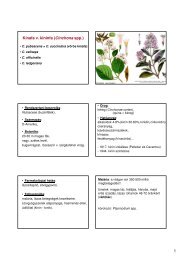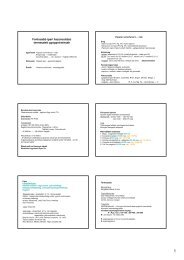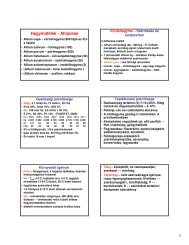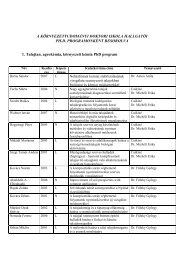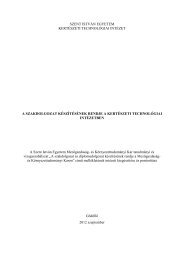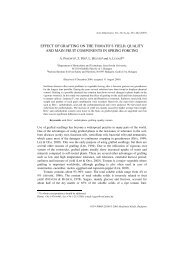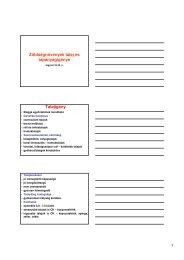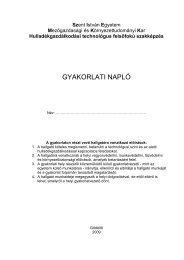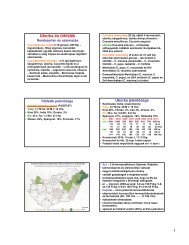PhD Fekete - SZIE version - 2.2 - Szent István Egyetem
PhD Fekete - SZIE version - 2.2 - Szent István Egyetem
PhD Fekete - SZIE version - 2.2 - Szent István Egyetem
You also want an ePaper? Increase the reach of your titles
YUMPU automatically turns print PDFs into web optimized ePapers that Google loves.
Results<br />
4.<strong>2.2</strong>.1. The role of lateral and medial collateral ligaments<br />
As an interesting modelling question, the possible effect of the collateral ligaments has been<br />
considered as a factor, which might alter the sliding-rolling ratio. Their important role is<br />
undisputable regarding the stability of the knee, but their contribution to the local kinematics<br />
(sliding-rolling) is currently unknown. For this reason, three prostheses, with additional<br />
collateral ligaments, were examined whether the included ligaments have significant impact on<br />
the sliding-rolling between the contact surfaces (Figure 4.20).<br />
Among the prostheses, the SZIU, the DePuy and the Biotech TP P/S models were chosen for<br />
further investigation. The SZIU model was considered as being a prototype model while the<br />
DePuy and the Biotech TP P/S models for being widely accepted and applied replacements in<br />
the practice.<br />
Figure 4.20. MSC.ADAMS model with collateral ligaments<br />
The medial- and lateral collateral ligaments were represented with linear springs with stiffness<br />
value of 134 and 114 N/mm and damping constant of 0.15 Ns/mm [Momersteeg et al., 1995].<br />
The contact points were appointed according to the studies of Park et al. [Park et al., 2006] and<br />
König et al. [König et al., 2011].<br />
After setting the additional parameters, the simulations were carried out under the same<br />
circumstances as before. The following results were obtained:<br />
– 136 –




